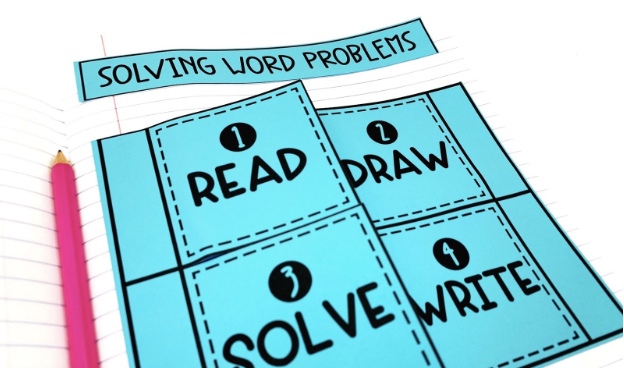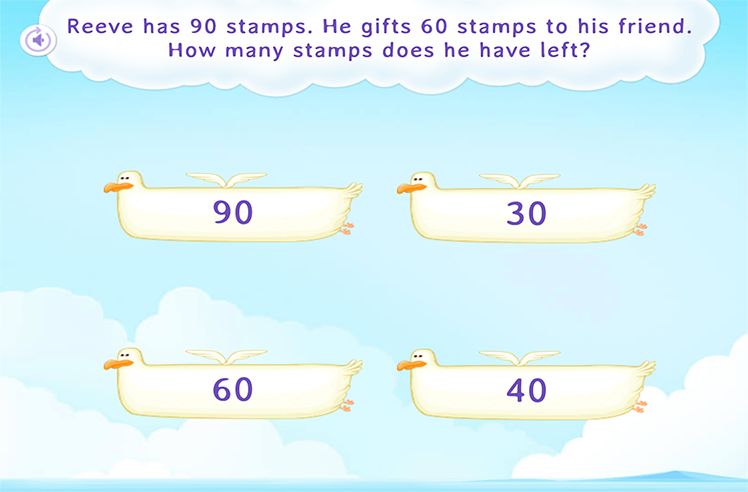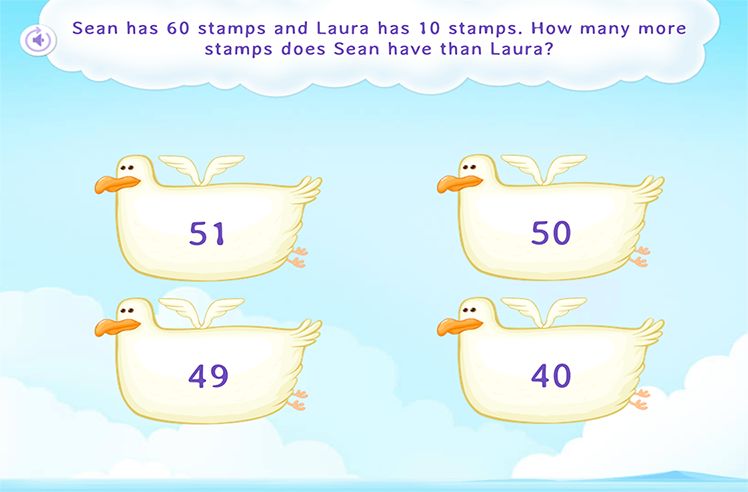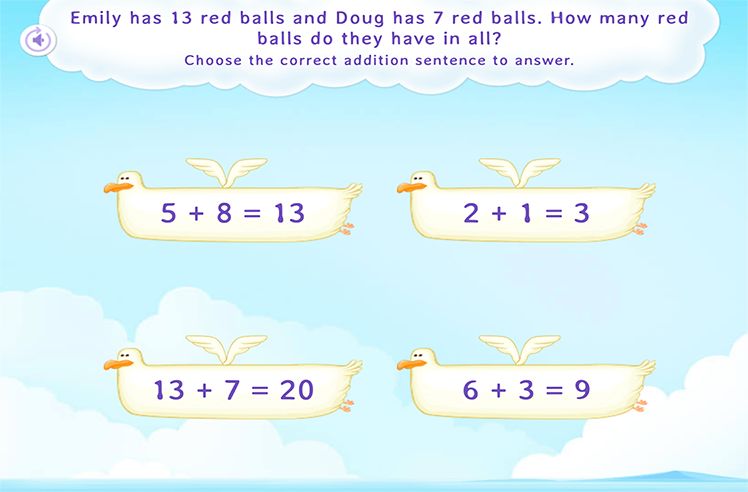- 1. Understand the Problem by Paraphrasing
- 2. Identify Key Information and Variables
- 3. Translate Words into Mathematical Symbols
- 4. Break Down the Problem into Manageable Parts
- 5. Draw Diagrams or Visual Representations
- 6. Use Estimation to Predict Answers
- 7. Apply Logical Reasoning for Unknown Variables
- 8. Leverage Similar Problems as Templates
- 9. Check Answers in the Context of the Problem
- 10. Reflect and Learn from Mistakes
Have you ever observed the look of confusion on a student’s face when they encounter a math word problem? It’s a common sight in classrooms worldwide, underscoring the need for effective strategies for solving math word problems. The main hurdle in solving math word problems is not just the math itself but understanding how to translate the words into mathematical equations that can be solved.
Math & ELA | PreK To Grade 5
Kids see fun.
You see real learning outcomes.
Watch your kids fall in love with math & reading through our scientifically designed curriculum.
Parents, try for free Teachers, use for free
Generic advice like “read the problem carefully” or “practice more” often falls short in addressing students’ specific difficulties with word problems. Students need targeted math word problem strategies that address the root of their struggles head-on.
A Guide on Steps to Solving Word Problems: 10 Strategies
1. Understand the Problem by Paraphrasing
One of the first steps in tackling a math word problem is to make sure your students understand what the problem is asking. Encourage them to paraphrase the problem in their own words. This means they rewrite the problem using simpler language or break it down into more digestible parts. Paraphrasing helps students grasp the concept and focus on the problem’s core elements without getting lost in the complex wording.
Example:
Original Problem: “If a farmer has 15 apples and gives away 8, how many does he have left?”
Paraphrased: “A farmer had some apples. He gave some away. Now, how many apples does he have?”
This paraphrasing helps students identify the main action (giving away apples) and what they need to find out (how many apples are left).
Play these subtraction word problem games in the classroom for free:
2. Identify Key Information and Variables
Students often get overwhelmed by the details in word problems. Teach them to identify key information and variables essential for solving the problem. This includes numbers, operations (addition, subtraction, multiplication, division), and what the question is asking them to find. Highlighting or underlining can be very effective here. This visual differentiation can help students focus on what’s important, ignoring irrelevant details.
Tips:
- Encourage students to underline numbers and circle keywords that indicate operations (like ‘total’ for addition and ‘left’ for subtraction).
- Teach them to write down what they’re solving for, such as “Find: Total apples left.”
Example:
Problem: “A classroom has 24 students. If 6 more students joined the class, how many students are there in total?”
Key Information:
- Original number of students (24)
- Students joined (6)
- Looking for the total number of students
Here are some fun addition word problems that your students can play for free:
Related Reading: Best Addition Apps for Kids
3. Translate Words into Mathematical Symbols
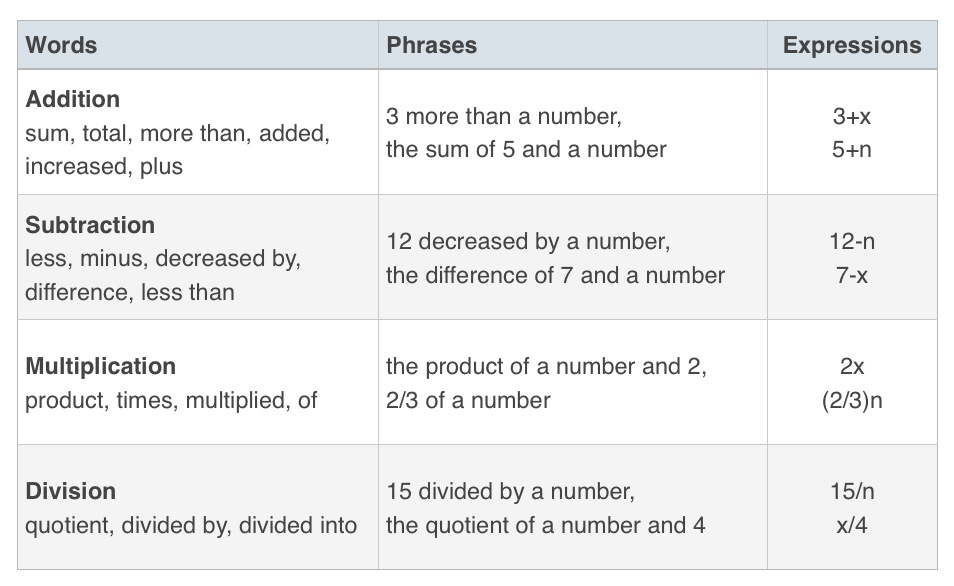
The transition from the language of word problems to the language of mathematics is a critical skill. Teach your students to convert words into mathematical symbols and equations. This step is about recognizing keywords and phrases corresponding to mathematical operations and expressions.
Common Translations:
- “Total,” “sum,” “combined” → Addition (+)
- “Difference,” “less than,” “remain” → Subtraction (−)
- “Times,” “product of” → Multiplication (×)
- “Divided by,” “quotient of” → Division (÷)
- “Equals” → Equals sign (=)
Example:
Problem: “If one book costs $5, how much would 4 books cost?”
Translation: The word “costs” indicates a multiplication operation because we find the total cost of multiple items. Therefore, the equation is 4 × 5 = $20
4. Break Down the Problem into Manageable Parts
Complex math word problems can often overwhelm students. Incorporating math strategies for problem solving, such as teaching them to break down the problem into smaller, more manageable parts, is a powerful approach to overcome this challenge. This means looking at the problem step by step rather than simultaneously trying to solve it. Breaking it down helps students focus on one aspect of the problem at a time, making finding the solution more straightforward.
Example:
Problem: “John has twice as many apples as Sarah. If Sarah has 5 apples, how many apples do they have together?”
Steps to Break Down the Problem:
Find out how many apples John has: Since John has twice as many apples as Sarah, and Sarah has 5, John has 5 × 2 = 10
Calculate the total number of apples: Add Sarah’s apples to John’s to find the total, 5 + 10 = 15
By splitting the problem into two parts, students can solve it without getting confused by all the details at once.
Explore these fun multiplication word problem games:
Related Reading: Best Multiplication Tricks for Math Students
5. Draw Diagrams or Visual Representations
Diagrams and visual representations can be incredibly helpful for students, especially when dealing with spatial or quantity relationships in word problems. Encourage students to draw simple sketches or diagrams to represent the problem visually. This can include drawing bars for comparison, shapes for geometry problems, or even a simple distribution to better understand division or multiplication problems.
Example:
Problem: “A garden is 3 times as long as it is wide. If the width is 4 meters, how long is the garden?”
Visual Representation: Draw a rectangle and label the width as 4 meters. Then, sketch the length to represent it as three times the width visually, helping students see that the length is 4 × 3 = 12
6. Use Estimation to Predict Answers
Estimation is a valuable skill in solving math word problems, as it allows students to predict the answer’s ballpark figure before solving it precisely. Teaching students to use estimation can help them check their answers for reasonableness and avoid common mistakes.
Example:
Problem: “If a book costs $4.95 and you buy 3 books, approximately how much will you spend?”
Estimation Strategy: Round $4.95 to the nearest dollar ($5) and multiply by the number of books (3), so 5 × 3 = 15. Hence, the estimated total cost is about $15.
Estimation helps students understand whether their final answer is plausible, providing a quick way to check their work against a rough calculation.
Check out these fun estimation and prediction word problem worksheets that can be of great help:
7. Apply Logical Reasoning for Unknown Variables
When students encounter problems with unknown variables, it’s crucial to introduce them to logical reasoning. This strategy involves using the information in the problem to deduce the value of unknown variables logically. One of the most effective strategies for solving math word problems is working backward from the desired outcome. This means starting with the result and thinking about the steps leading to that result, which can be particularly useful in algebraic problems.
Example:
Problem: “A number added to three times itself equals 32. What is the number?”
Working Backward:
Let the unknown number be x.
The equation based on the problem is x + 3x = 32
Solve for x by simplifying the equation to 4x=32, then dividing by 4 to find x=8.
By working backward, students can more easily connect the dots between the unknown variable and the information provided.
8. Leverage Similar Problems as Templates
Practicing problems of similar structure can help students recognize patterns and apply known strategies to new situations. Encourage them to leverage similar problems as templates, analyzing how a solved problem’s strategy can apply to a new one. Creating a personal “problem bank”—a collection of solved problems—can be a valuable reference tool, helping students see the commonalities between different problems and reinforcing the strategies that work.
Example:
Suppose students have solved a problem about dividing a set of items among a group of people. In that case, they can use that strategy when encountering a similar problem, even if it’s about dividing money or sharing work equally.
9. Check Answers in the Context of the Problem
It’s essential for students to learn the habit of checking their answers within the context of the problem to ensure their solutions make sense. This step involves going back to the original problem statement after solving it to verify that the answer fits logically with the given information. Providing a checklist for this process can help students systematically review their answers.
Checklist for Reviewing Answers:
- Re-read the problem: Ensure the question was understood correctly.
- Compare with the original problem: Does the answer make sense given the scenario?
- Use estimation: Does the precise answer align with an earlier estimation?
- Substitute back: If applicable, plug the answer into the problem to see if it works.
Example:
Problem: “If you divide 24 apples among 4 children, how many apples does each child get?”
After solving, students should check that they understood the problem (dividing apples equally).
Their answer (6 apples per child) fits logically with the number of apples and children.
Their estimation aligns with the actual calculation.
Substituting back 4×6=24 confirms the answer is correct.
Teaching students to apply logical reasoning, leverage solved problems as templates, and check their answers in context equips them with a robust toolkit for tackling math word problems efficiently and effectively.
10. Reflect and Learn from Mistakes
One of the most effective ways for students to improve their problem-solving skills is by reflecting on their errors, especially with math word problems. Using word problem worksheets is one of the most effective strategies for solving word problems, and practicing word problems as it fosters a more thoughtful and reflective approach to problem-solving
These worksheets can provide a variety of problems that challenge students in different ways, allowing them to encounter and work through common pitfalls in a controlled setting. After completing a worksheet, students can review their answers, identify any mistakes, and then reflect on them in their mistake journal. This practice reinforces mathematical concepts and improves their math problem solving strategies over time.
3 Additional Tips for Enhancing Word Problem-Solving Skills
Before we dive into the importance of reflecting on mistakes, here are a few impactful tips to enhance students’ word problem-solving skills further:
1. Utilize Online Word Problem Games
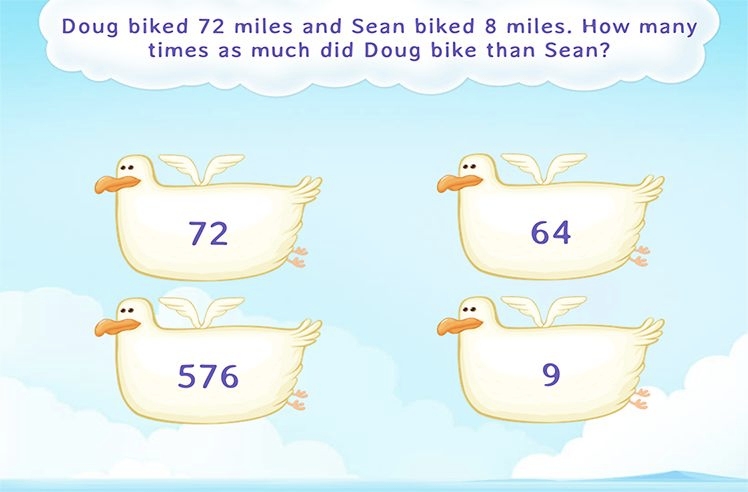
Incorporate online games that focus on math word problems into your teaching. These interactive platforms make learning fun and engaging, allowing students to practice in a dynamic environment. Games can offer instant feedback and adaptive challenges, catering to individual learning speeds and styles.
Here are some word problem games that you can use for free:
2. Practice Regularly with Diverse Problems
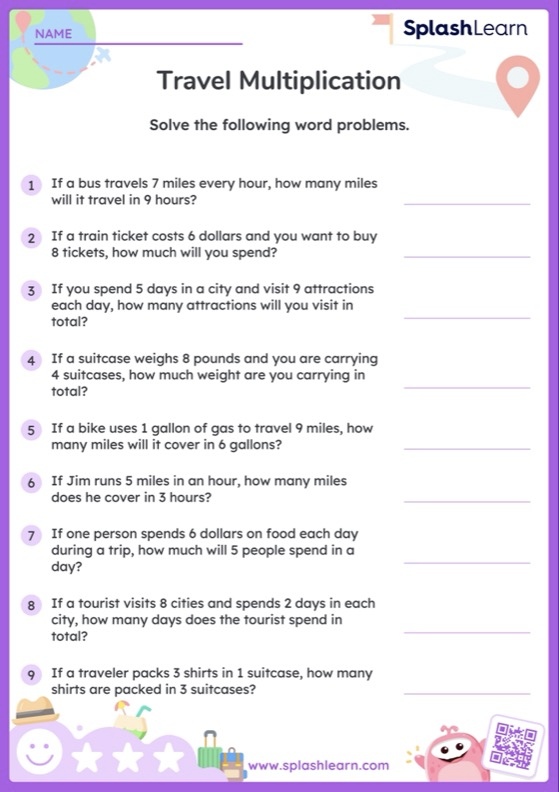
Consistent practice with a wide range of word problems helps students become familiar with different questions and mathematical concepts. This exposure is crucial for building confidence and proficiency.
Start Practicing Word Problems with these Printable Word Problem Worksheets:
3. Encourage Group Work
Solving word problems in groups allows students to share strategies and learn from each other. A collaborative approach is one of the best strategies for solving math word problems that can unveil multiple methods for tackling the same problem, enriching students’ problem-solving toolkit.
Related Reading: Best Math Brain Teasers for Kids [with answers]
Conclusion
Mastering math word problems is a journey of small steps. Encourage your students to practice regularly, stay curious, and learn from their mistakes. These strategies for solving math word problems are stepping stones to turning challenges into achievements. Keep it simple, and watch your students grow their confidence and skills, one problem at a time.
Related Reading: Best Math Riddles for Kids with Answers
Frequently Asked Questions (FAQs)
How can I help my students stay motivated when solving math word problems?
Encourage small victories and use engaging tools like online games to make practice fun and rewarding.
What's the best way to teach beginners word problems?
Begin with simple problems that integrate everyday scenarios to make the connection between math and real-life clear and relatable.
How often should students practice math word problems?
Regular, daily practice with various problems helps build confidence and problem-solving skills over time.

















